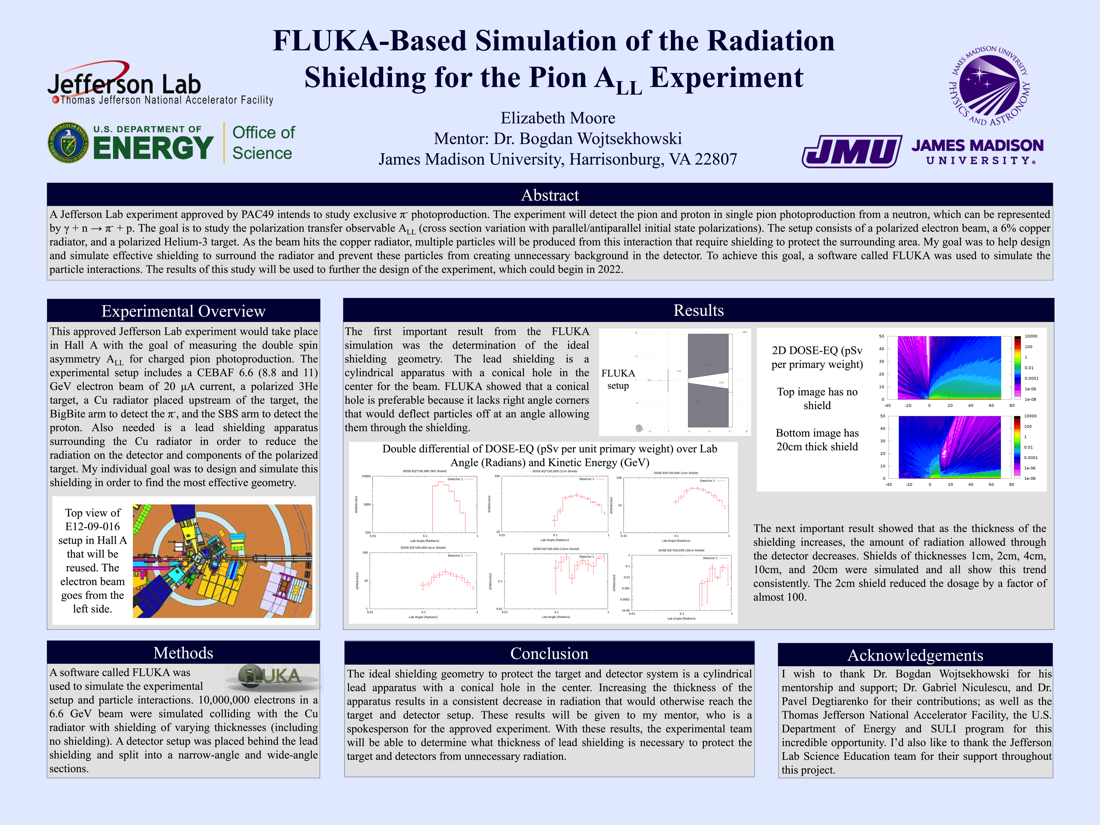Undergraduate Research at Jefferson Lab
FLUKA-Based Simulation of the Radiation Shielding for the Pion ALL Experiment
Student: Elizabeth Moore
School: James Madison University
Mentored By: Dr. Bogdan Wojtsekhowski
A proposed experiment to Jefferson Lab PAC49 intends to study single π- photoproduction. The experiment will detect the pion and proton in single pion photoproduction from a neutron, which can be represented by γ + n → π- + p. The goal is to study the polarization transfer observable ALL (cross section variation with parallel/antiparallel initial state polarizations). The setup consists of a polarized electron beam, a 6% copper radiator, and a polarized Helium-3 target. As the beam hits the copper radiator, various particles will be produced that require shielding to protect the surrounding area. My goal is to help design and simulate effective shielding to surround the radiator and prevent these particles from creating unnecessary background in the detector. To achieve this goal, a software called FLUKA is used to simulate the particle interactions. In FLUKA, the experimental setup was modeled and simulated 10,000,000 electrons in a 6.6 GeV beam hitting the copper target. From multiple trials with various shapes and sizes of shielding, I was able to conclude that cylindrical lead shielding with a conical hole in the center effectively reduces the amount and energy of photons that would otherwise enter the detector. Varying thicknesses from 1cm to 20cm were also compared and showed that the amount and energy of photons reaching the detector decreased as shielding thickness increased. Due to previous studies, we knew that lead shielding would be the best choice for material. These new results show that the proposed shielding geometry is sufficient to protect detectors from the byproducts of the interactions between the electron beam and copper radiator. With this confidence in our shielding, we can move forward with this proposed experiment at Jefferson Lab.
[Watch the presentation on YouTube]

Citation and linking information
For questions about this page, please contact Education Web Administrator.
